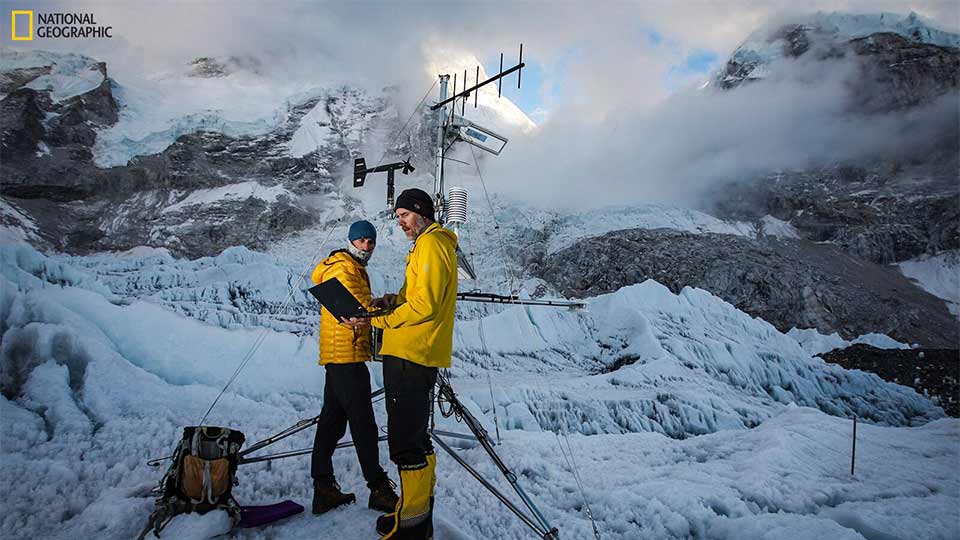And for the past month their treacherous journey to the top has been broadcast into the living rooms of people around the globe as part of a one-hour special on National Geographic.
This Sunday (19 July) at 10pm, UK National Geographic viewers will too have the chance to catch ‘Expedition Everest’, which captures the trailblazing climate research that is critical to understanding changes facing the mountain and its glaciers. It also shines a light on the threats these changes pose to the communities that live downstream.
The ground-breaking mission, led by the National Geographic Society and Tribhuvan University in partnership with Rolex, captures the drama that the dedicated, elite expedition team faced. It reveals the high stakes and motivations of those who risk their lives to discover the secrets of Everest.
Narrated by actor Tate Donovan (“MacGyver,” “The Man in the High Castle”), the programme follows Dr Matthews and the team - comprised of members from eight countries (half of whom were from Nepal) - as they trek higher up the mountain.
As well as installing the weather stations, a plethora of valuable research was undertaken at different stages of the expedition - ranging from taking the world’s highest ice core, to conducting biodiversity surveys.
The team faced many challenges – especially in the “death zone” (above 8,000 metres), which not only saw them brave extreme conditions but also dangerous crowding that made headlines at the time.
Despite the far-from-perfect conditions, the team powered through and successfully installed the highest-ever weather station, which provides near real-time data on conditions at the roof of the world.
As well as benefiting those wishing to climb the mountain and those living near to it, it is hoped the data generated from the weather station will lead to a better understanding of how climate change is impacting high-altitude glaciers – which are of global significance as they store water for hundreds of millions of people.
Dr Matthews commented: “It’s a privilege to have played a small role in what was a groundbreaking scientific expedition to Mount Everest.
“There are big questions about how the climate on the roof of the world is changing, and it takes something as ambitious as this National Geographic and Rolex Perpetual Planet Everest Expedition to help find the answers.”
He continued: “I am excited that people will get the chance to learn about these critical issues in the documentary.
“The story is, however, still very much ongoing, as we are now busy analysing data from Everest.
“Along with my fellow scientists from the expedition, I am also excited about sharing these results over the months to come.”
To learn more about the expedition and the vital role mountain systems like Everest play in providing water resources to nearly a quarter of the world’s population, visit https://www.natgeo.com/everest. You can also follow @Ever_Weather on Twitter for real-time data from the network of weather stations installed on the expedition.
